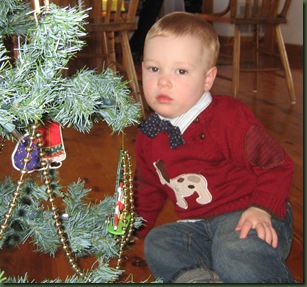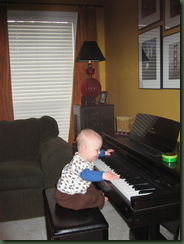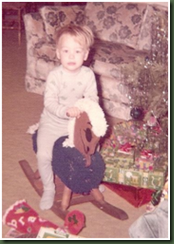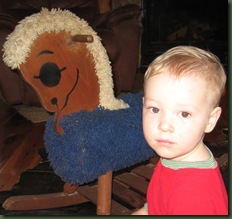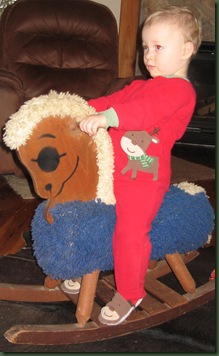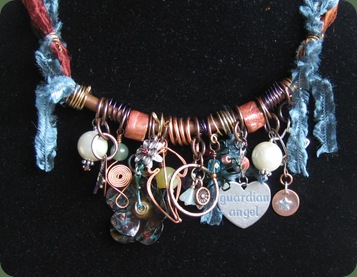Problem solving is a natural part of life. Every time a designer begins a piece, he or she faces a myriad of problems such as which beads to use, where to place the focal, how long to make the piece and so on. These probably don’t really seem like B I G problems and you may see them more as choices. Yet, we do solve these little choices in the same way that solve the bigger issues.
During creativity training courses, we learn all sorts of great ways to move toward problem solutions. I’m thankful to have had this training during another phase of my life and subconsciously rely on it often. We can also view and learn from problem solving in nature. The first photo below shows how the bulls here at Dreamcatcher Ranch solved their problem of finding something delicious to eat. Much to the chagrin of the hunters on our property, these ten big guys helped themselves to the deer corn out of one of the feeders. A hunter captured this photo from his video cam at the site. So what’s the problem?
There wasn’t really a problem for the bulls, but we had a problem that centered around how to keep them out of the deer corn and make the hunters happy. We thought about how to keep the corn away from the bulls, but quickly realized that there wasn’t any type temporary fence that would keep these guys away from food. So, we reversed the situation and decided to keep the bulls away from the corn. We let them happily spend the couple of weeks until hunting season was over in the large steel pipe fence pens near the house where they lounged and ate nice bales of hay.
The next photo shows another problem that occurred at the same venue.
This one is a bit more difficult to see, but you will again recognize a deer feeder and note the raccoons on the ground. The raccoon in the tree, whether the sole perpetrator of this theft or simply the one sent by the others, is reaching from the tree over to the hanging feeder. He must be saying “hey, guys, do you think if I shake this thing more deer corn will come out?” He appears to be solving his problem quite nicely. This time, we just gave up, thinking there was no way to keep raccoons away from that feeder. My question is “how did he get down from there? “
In both photos, animals are seen just doing the natural thing to solve a problem. So today, I decided to think naturally too. For the several years since I made my mother the sweatshirt shown in the photo below, she has been having me iron the hearts on the sleeve.
 You can see that they are “flying hearts” which is what I intended when I made them. I thought a little motion would be cute, but these want to crease in half after laundering. Mother doesn’t like this and since I do her laundry, she usually sends this sweatshirt back home with me if I forget to iron down the hearts. Last week, having forgotten to iron the hearts, I snuck it into her closet at the nursing home while she wasn’t looking. Later in the week when I picked up her dirty clothes, she explained that the day she wore the sweatshirt, she told everyone she saw that her sleeve hearts looked funny because her daughter (that would be me) wouldn’t iron them! So, I took the sweatshirt home and planned to iron those silly hearts. Yet, last night, I decided it would be better to solve that problem once and for all. While it seemed natural to just keep ironing the hearts after each washing, I was becoming just a bit annoyed about it. So, I took a different approach and today I tacked those little gals down permanently with thread. It seemed like the natural thing to do. It also was the simplest thing to do. Why hadn’t I done it before?
You can see that they are “flying hearts” which is what I intended when I made them. I thought a little motion would be cute, but these want to crease in half after laundering. Mother doesn’t like this and since I do her laundry, she usually sends this sweatshirt back home with me if I forget to iron down the hearts. Last week, having forgotten to iron the hearts, I snuck it into her closet at the nursing home while she wasn’t looking. Later in the week when I picked up her dirty clothes, she explained that the day she wore the sweatshirt, she told everyone she saw that her sleeve hearts looked funny because her daughter (that would be me) wouldn’t iron them! So, I took the sweatshirt home and planned to iron those silly hearts. Yet, last night, I decided it would be better to solve that problem once and for all. While it seemed natural to just keep ironing the hearts after each washing, I was becoming just a bit annoyed about it. So, I took a different approach and today I tacked those little gals down permanently with thread. It seemed like the natural thing to do. It also was the simplest thing to do. Why hadn’t I done it before?
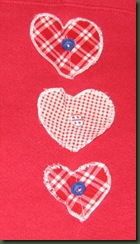 It seems that sometimes, I forget that I can solve a problem rather than putting a band aid on it as in the case of just ironing the hearts. I could have saved a time and frustration if I had just fixed it right to start with. We fixed the bull/deer corn issue right the first time and the raccoons seemed to have solved their problem, so why can’t humans? The next time I run into a little problem irritant, I’m going to use my animal instincts!
It seems that sometimes, I forget that I can solve a problem rather than putting a band aid on it as in the case of just ironing the hearts. I could have saved a time and frustration if I had just fixed it right to start with. We fixed the bull/deer corn issue right the first time and the raccoons seemed to have solved their problem, so why can’t humans? The next time I run into a little problem irritant, I’m going to use my animal instincts!
By the way, my mother will be 90 years old tomorrow. I love solving her little problems!


